Reviews
Frederick Wiseman
USA, 1975
Credits
Review by Katherine Follett
Posted on 09 June 2008
Source Zipporah Films DVD
Categories Frederick Wiseman
Welfare is a difficult film to watch. This was obviously Frederick Wiseman’s intention, and he achieved it through his trademark flawless fly-on-the wall photography, editing, and direction. It is an exasperating, exhausting, hopeless film that nonetheless manages to display its maker’s profound talent for capturing and assembling images.
The entire film was shot within the windowless confines of a New York City welfare office, with just a few establishing shots of the grim, snowy neighborhood to give us a sense of place (the powerful New York accents and attitudes also do this very thoroughly). The rest of the film is devoted to the business of the office: the waiting room, employee-client interactions, and a little bit of water-cooler chitchat. More than anything, the effect makes you grateful that you’re neither a welfare client nor an employee of government social services. The welfare office, Wiseman’s film seems to say, is an interminable hell.
Most of the running time consists of welfare clients speaking to welfare representatives, trying to solve problems or make changes to their coverage. It’s an infuriating process of untangling a hopeless mire of red tape. Everything, even the most private and mundane change in a client’s life, must be documented and notarized. Yet even with hundreds of forms and an avalanche of rules, it seems that every situation is an exception that can’t be helped. A man’s roommate moves out to live with a girlfriend, and there’s no assistance to cover the gap before he finds another roommate. A woman’s husband leaves, and the welfare account can’t be transferred into her name until she legally proves the split, which means contacting the disappeared man and convincing him to give up his monthly checks. At every roadblock, clients are shunted from one desk to the next, one department to the next, or told to return with yet another set of paperwork in an endlessly complex passing of the buck.
The welfare recipients react with everything from bewilderment to anger to tearfulness to nonsensical ranting to articulate, patient objection. And the people behind the desks seem to do the same. Some are impatient with their clients, others exasperated with the bureaucracy on all sides, still others obstinate in their adherence to the rules (or what they’ve pieced together from the hopeless tangle of regulations and exceptions). Everyone, clients and case workers, seems to know that the system doesn’t work, that hearings will be three weeks away, that housing inspection won’t happen for up to a year, that appointments will vanish when clients arrive at the office the next morning.
The most painful interactions are the ones in which the welfare workers and the welfare clients both want the same thing—for the case to be solved and the people to get the assistance they need. But the labyrinthine bureaucracy prevents any progress. Wiseman films an extended interchange with a woman named Mrs. Johnson, whose switch from an apartment to a hotel and from welfare to Social Security has not so much allowed her to fall through the cracks as thrown her to the floor and crammed her through the cracks with a butter knife. Her polite desperation, and the clear compassion of her caseworker, is heartbreaking and brutal to watch. It only gets mildly more entertaining when the woman’s brassy adult daughter comes in and chews out the caseworker’s supervisor. Yet nothing is solved.
The film shows not only that welfare doesn’t work, but also why it doesn’t. The system is designed not with the thought, “How can we help the most people?” but “How can we avoid helping anybody who doesn’t absolutely need it?” So the entire bureaucracy errs on the side of rejecting people. As soon as a single error, misunderstanding, or omission shows up, the welfare roles automatically move to reject the client, purging them entirely from the system and ensuring that they have to start all over again. It is clear, the film seems to say, that our government cannot help our poorest citizens unless it wants to help them, and unless it considers them deserving of help. It is obvious from this film that in 1975 our government wanted to do no such thing.
Wiseman seems particularly careful to film a wide range of welfare clients, from a beautiful pregnant woman to elderly immigrants to a charismatic middle-aged man who’s only a little crazy around the edges to a rambling racist with a fractured skull to an extremely polite and soft-spoken man just released from prison for homicide. Sometimes these people are obviously the city’s outcasts: the visibly mentally ill, the elderly, immigrants, the sick, the very likely drug-addicted. But other times, the people don’t have an obvious “reason” to be poor. They are articulate, appearance-conscious, seemingly healthy. It should be noted that most of the people who fall into this latter category are minorities or, in a couple of cases, gay or transgendered. You wonder if advances since 1975 have improved the situation, but given how little hope runs through the film, you end up thinking not. Another marker of the times is the sheer amount of paperwork: receipts, letters, files. Everything in the film is done analog and by hand, in person or over the telephone. Each client has a mountain of wrinkled papers in his or her pockets (one assumes most welfare clients aren’t in a position to start a filing system). Again, one wonders if computers and electronic communication have brought any efficiency. And again, one feels little hope.
As a film, Welfare is nearly seamless. The black-and-white photography is stark and grim without being ugly or unflattering to its subjects. The shots are chosen with care and filmed with grace. And whether this is Wiseman’s doing or the nature of the office, the subjects of the film are so utterly oblivious to the cameras that you don’t even feel as though you’re there in person—you feel as though you were an invisible presence. Obviously, this cannot be entirely true; the camera will change the “real life” it tries to record, but with Wiseman’s films, this effect is either invisible or negligible. Wiseman is not just a masterful editor of images, but also an expert collector and arranger of sound. He manages to include evocative ambient noise in almost every shot—a baby wailing, the murmur of dozens of other cases being arbitrated in the background, the constant, high-decibel ranting of an elderly woman that adds a shrill tension to every conversation she interrupts. The very few places where the hand of the filmmaker becomes apparent, when we realize that we aren’t just flies on the wall, are when sounds from one shot are carefully layered over visuals from another. During these tiny breaks in the fourth wall, and after viewing the film, one might consider the choices Wiseman made and how the film (and our impression of welfare) may have been different. After all, this is the welfare office; the point of its existence is to address difficulty and complaints. Did he omit hundreds of employee-client interactions in which everything went smoothly and both parties went away satisfied? If he’d filmed the welfare clients in their daily lives, would we see the benefits the assistance gave them? Or would we see a crook or a drug addict ripping off the system despite its clumsy safeguards? It is impossible to say. Wiseman is such a master of the form that his impressions seem utterly inevitable.
More Frederick Wiseman
-
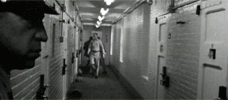
Titicut Follies
1967 -
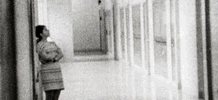
High School
1968 -

Law & Order
1969 -

Basic Training
1971 -

Juvenile Court
1972 -
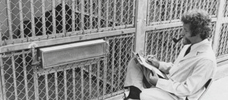
Primate
1974 -
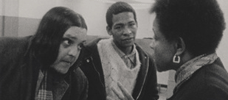
Welfare
1975 -

Meat
1976 -
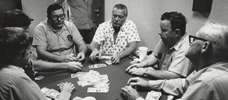
Sinai Field Mission
1978 -

Manoeuvre
1979 -

Model
1980 -

The Store
1983 -

Blind
USA -

Adjustment & Work
1986 -

Missile
1987 -

Central Park
1989 -

Near Death
1989 -

Aspen
1991 -

Zoo
1993 -

High School II
1994 -

Ballet
1995 -

La Comédie-Française
1996 -

Public Housing
1997 -

Belfast, Maine
1999 -

Domestic Violence / Domestic Violence 2
2001 / 2002 -
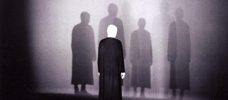
The Last Letter
2002 -

State Legislature
2006
We don’t do comments anymore, but you may contact us here or find us on Twitter or Facebook.



